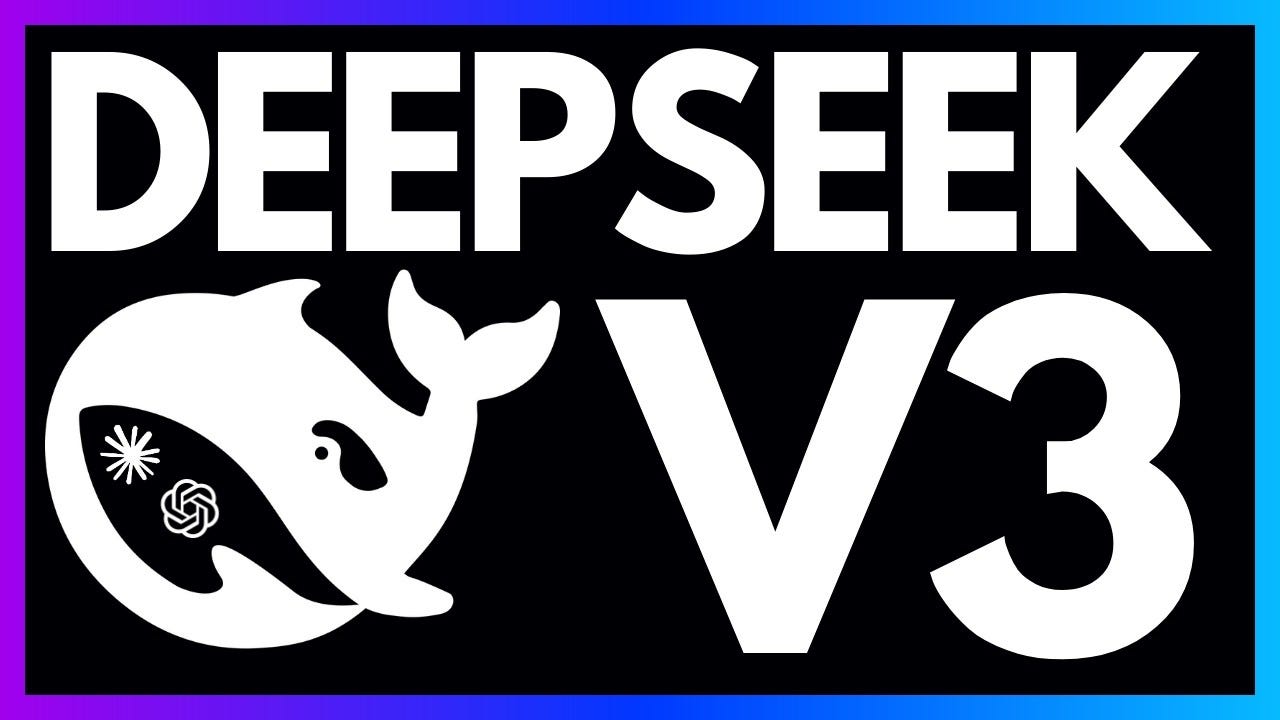
Bakicicepte
FollowOverview
-
Date de fondation 27 septembre 1904
-
Secteurs Restauration
-
Posted Jobs 0
-
Vues 78
L'entreprise
Understanding DeepSeek R1

We’ve been tracking the explosive increase of DeepSeek R1, which has taken the AI world by storm in current weeks. In this session, we dove deep into the advancement of the DeepSeek household – from the early designs through DeepSeek V3 to the advancement R1. We also checked out the technical developments that make R1 so special in the world of open-source AI.

The DeepSeek Family Tree: From V3 to R1
DeepSeek isn’t just a single model; it’s a household of significantly sophisticated AI systems. The evolution goes something like this:
DeepSeek V2:
This was the structure design which leveraged a mixture-of-experts architecture, where only a subset of specialists are used at reasoning, drastically enhancing the processing time for each token. It likewise featured multi-head latent attention to decrease memory footprint.
DeepSeek V3:
This model presented FP8 training techniques, which helped drive down training costs by over 42.5% compared to previous models. FP8 is a less exact method to save weights inside the LLMs however can significantly improve the memory footprint. However, training using FP8 can normally be unsteady, and it is difficult to obtain the desired training results. Nevertheless, DeepSeek uses several tricks and attains remarkably stable FP8 training. V3 set the stage as an extremely effective model that was currently affordable (with claims of being 90% less expensive than some closed-source options).
DeepSeek R1-Zero:
With V3 as the base, the team then presented R1-Zero, the very first reasoning-focused version. Here, the focus was on teaching the model not just to create answers however to « think » before answering. Using pure support learning, the design was motivated to generate intermediate reasoning steps, for example, taking additional time (typically 17+ seconds) to resolve a simple problem like « 1 +1. »
The key development here was making use of group relative policy optimization (GROP). Instead of counting on a standard procedure benefit design (which would have required annotating every action of the thinking), GROP compares numerous outputs from the design. By tasting a number of potential answers and scoring them (using rule-based measures like exact match for mathematics or validating code outputs), the system discovers to prefer reasoning that results in the appropriate result without the requirement for explicit supervision of every intermediate thought.
DeepSeek R1:
Recognizing that R1-Zero’s not being watched approach produced reasoning outputs that could be difficult to read or even mix languages, the developers returned to the drawing board. They utilized the raw outputs from R1-Zero to produce « cold start » information and after that manually curated these examples to filter and enhance the quality of the thinking. This human post-processing was then used to fine-tune the original DeepSeek V3 model further-combining both reasoning-oriented support learning and supervised fine-tuning. The outcome is DeepSeek R1: a model that now produces readable, raovatonline.org meaningful, and dependable thinking while still maintaining the performance and cost-effectiveness of its predecessors.
What Makes R1 Series Special?
The most fascinating aspect of R1 (zero) is how it developed thinking capabilities without explicit supervision of the reasoning procedure. It can be even more enhanced by using cold-start information and supervised reinforcement learning to produce understandable reasoning on basic tasks. Here’s what sets it apart:
Open Source & Efficiency:
R1 is open source, allowing researchers and designers to examine and develop upon its developments. Its cost effectiveness is a significant selling point especially when compared to closed-source designs (claimed 90% more affordable than OpenAI) that require huge compute budgets.
Novel Training Approach:
Instead of relying entirely on annotated reasoning (which is both costly and time-consuming), the design was trained using an outcome-based method. It began with easily proven jobs, such as mathematics issues and coding exercises, where the accuracy of the last response could be quickly measured.
By using group relative policy optimization, the training procedure compares several generated responses to figure out which ones satisfy the wanted output. This relative scoring mechanism enables the design to find out « how to believe » even when intermediate thinking is created in a freestyle manner.
Overthinking?
A fascinating observation is that DeepSeek R1 often « overthinks » easy problems. For example, when asked « What is 1 +1? » it may spend nearly 17 seconds assessing various scenarios-even thinking about binary representations-before concluding with the appropriate response. This self-questioning and verification procedure, although it might appear inefficient in the beginning look, might prove advantageous in complex jobs where deeper thinking is required.
Prompt Engineering:
Traditional few-shot prompting methods, which have actually worked well for numerous chat-based designs, can actually deteriorate performance with R1. The designers recommend using direct problem declarations with a zero-shot approach that specifies the output format plainly. This makes sure that the model isn’t led astray by extraneous examples or tips that may interfere with its internal thinking procedure.
Getting Started with R1
For those aiming to experiment:

Smaller variants (7B-8B) can run on customer GPUs or perhaps only CPUs
Larger variations (600B) require substantial compute resources
Available through major cloud service providers
Can be deployed locally by means of Ollama or vLLM
Looking Ahead
We’re especially intrigued by numerous implications:
The capacity for this technique to be applied to other reasoning domains
Impact on agent-based AI systems generally built on chat designs
Possibilities for integrating with other guidance strategies
Implications for business AI implementation
Thanks for reading Deep Random Thoughts! Subscribe free of charge to receive brand-new posts and support my work.
Open Questions
How will this affect the advancement of future thinking designs?
Can this approach be reached less proven domains?
What are the ramifications for multi-modal AI systems?
We’ll be watching these developments carefully, especially as the community starts to try out and wiki.dulovic.tech build on these methods.
Resources
Join our Slack neighborhood for ongoing discussions and updates about DeepSeek and other AI advancements. We’re seeing remarkable applications already emerging from our bootcamp individuals working with these designs.
Chat with DeepSeek:
https://www.deepseek.com/
Papers:
DeepSeek LLM
DeepSeek-V2
DeepSeek-V3
DeepSeek-R1
Blog Posts:
The Illustrated DeepSeek-R1
DeepSeek-R1 Paper Explained

DeepSeek R1 – a brief summary
Cloud Providers:
Nvidia
Together.ai
AWS
Q&A
Q1: Which model deserves more attention – DeepSeek or Qwen2.5 Max?
A: While Qwen2.5 is likewise a strong model in the open-source community, the option eventually depends upon your usage case. DeepSeek R1 highlights innovative thinking and a novel training approach that may be specifically valuable in tasks where verifiable logic is vital.
Q2: Why did major providers like OpenAI select monitored fine-tuning instead of reinforcement knowing (RL) like DeepSeek?
A: We must keep in mind upfront that they do utilize RL at least in the type of RLHF. It is really most likely that designs from major service providers that have thinking abilities already utilize something comparable to what DeepSeek has actually done here, however we can’t make certain. It is likewise likely that due to access to more resources, they favored monitored fine-tuning due to its stability and the ready availability of big annotated datasets. Reinforcement knowing, although effective, can be less foreseeable and more difficult to control. DeepSeek’s technique innovates by applying RL in a reasoning-oriented manner, allowing the model to learn efficient internal reasoning with only very little process annotation – a method that has actually proven promising in spite of its intricacy.
Q3: Did DeepSeek utilize test-time compute strategies similar to those of OpenAI?
A: DeepSeek R1’s style stresses effectiveness by leveraging techniques such as the mixture-of-experts technique, which activates just a subset of parameters, to lower compute during inference. This focus on effectiveness is main to its cost benefits.
Q4: What is the difference between R1-Zero and R1?
A: R1-Zero is the preliminary model that discovers thinking entirely through reinforcement learning without explicit procedure supervision. It produces intermediate reasoning steps that, while in some cases raw or combined in language, work as the foundation for learning. DeepSeek R1, on the other hand, improves these outputs through human post-processing and supervised fine-tuning. In essence, R1-Zero offers the unsupervised « trigger, » and R1 is the refined, more coherent version.
Q5: How can one remain updated with thorough, technical research while handling a hectic schedule?
A: Remaining current includes a combination of actively engaging with the research community (like AISC – see link to join slack above), following preprint servers like arXiv, participating in pertinent conferences and webinars, and taking part in conversation groups and newsletters. Continuous engagement with online neighborhoods and collaborative research tasks likewise plays an essential role in staying up to date with technical improvements.
Q6: In what use-cases does DeepSeek outperform models like O1?
A: The short answer is that it’s too early to inform. DeepSeek R1’s strength, nevertheless, lies in its robust thinking abilities and its effectiveness. It is especially well fit for tasks that need verifiable logic-such as mathematical issue resolving, code generation, and structured decision-making-where intermediate thinking can be evaluated and verified. Its open-source nature further enables tailored applications in research and business settings.
Q7: What are the ramifications of DeepSeek R1 for business and start-ups?
A: The open-source and cost-efficient style of DeepSeek R1 reduces the entry barrier for releasing innovative language models. Enterprises and start-ups can utilize its advanced thinking for agentic applications ranging from automated code generation and consumer support to data analysis. Its flexible release options-on customer hardware for smaller sized designs or cloud platforms for bigger ones-make it an appealing option to exclusive services.
Q8: Will the model get stuck in a loop of « overthinking » if no right answer is discovered?
A: While DeepSeek R1 has actually been observed to « overthink » basic problems by exploring multiple thinking courses, it integrates stopping requirements and examination mechanisms to avoid limitless loops. The reinforcement discovering framework motivates merging towards a proven output, even in uncertain cases.
Q9: Is DeepSeek V3 entirely open source, and is it based on the Qwen architecture?
A: Yes, DeepSeek V3 is open source and worked as the foundation for later versions. It is developed on its own set of innovations-including the mixture-of-experts approach and FP8 training-and is not based on the Qwen architecture. Its design stresses performance and cost reduction, setting the phase for the reasoning innovations seen in R1.
Q10: How does DeepSeek R1 perform on vision jobs?
A: DeepSeek R1 is a text-based design and does not integrate vision abilities. Its style and training focus entirely on language processing and thinking.
Q11: Can specialists in specialized fields (for instance, laboratories dealing with treatments) use these methods to train domain-specific designs?
A: Yes. The innovations behind DeepSeek R1-such as its outcome-based reasoning training and effective architecture-can be adapted to various domains. Researchers in fields like biomedical sciences can tailor these techniques to construct models that resolve their particular difficulties while gaining from lower calculate expenses and robust thinking abilities. It is likely that in deeply specialized fields, however, there will still be a requirement for monitored fine-tuning to get trusted results.
Q12: Were the annotators for the human post-processing professionals in technical fields like computer technology or mathematics?
A: The conversation indicated that the annotators mainly focused on domains where accuracy is as math and coding. This recommends that proficiency in technical fields was certainly leveraged to guarantee the precision and clearness of the reasoning information.
Q13: Could the model get things incorrect if it depends on its own outputs for discovering?
A: While the design is designed to optimize for correct answers by means of reinforcement knowing, there is constantly a risk of errors-especially in uncertain circumstances. However, by evaluating numerous prospect outputs and strengthening those that cause proven outcomes, the training procedure lessens the likelihood of propagating incorrect reasoning.
Q14: How are hallucinations reduced in the design given its iterative reasoning loops?
A: The use of rule-based, proven tasks (such as mathematics and coding) helps anchor the model’s reasoning. By comparing multiple outputs and utilizing group relative policy optimization to strengthen only those that yield the appropriate outcome, the model is directed far from producing unfounded or hallucinated details.
Q15: garagesale.es Does the model count on complex vector mathematics?
A: Yes, advanced techniques-including complex vector math-are integral to the implementation of mixture-of-experts and attention systems in DeepSeek R1. However, the main focus is on using these techniques to make it possible for efficient reasoning rather than showcasing mathematical intricacy for its own sake.
Q16: Some stress that the model’s « thinking » might not be as improved as human thinking. Is that a legitimate issue?
A: Early iterations like R1-Zero did produce raw and often hard-to-read reasoning. However, the subsequent refinement process-where human specialists curated and improved the reasoning data-has substantially enhanced the clarity and reliability of DeepSeek R1’s internal idea process. While it remains an evolving system, iterative training and feedback have led to significant enhancements.
Q17: Which design variants are suitable for local release on a laptop computer with 32GB of RAM?
A: For local testing, a medium-sized model-typically in the series of 7B to 8B parameters-is suggested. Larger models (for pipewiki.org instance, those with numerous billions of criteria) need substantially more computational resources and are much better suited for cloud-based release.
Q18: Is DeepSeek R1 « open source » or does it provide just open weights?
A: DeepSeek R1 is supplied with open weights, implying that its design parameters are openly available. This lines up with the total open-source approach, enabling scientists and developers to additional check out and build on its innovations.
Q19: What would take place if the order of training were reversed-starting with supervised fine-tuning before unsupervised support learning?
A: The current technique permits the design to initially explore and produce its own reasoning patterns through unsupervised RL, and after that fine-tune these patterns with supervised techniques. Reversing the order may constrain the model’s capability to discover varied reasoning paths, potentially limiting its total performance in jobs that gain from self-governing idea.
Thanks for checking out Deep Random Thoughts! Subscribe totally free to receive brand-new posts and support my work.


